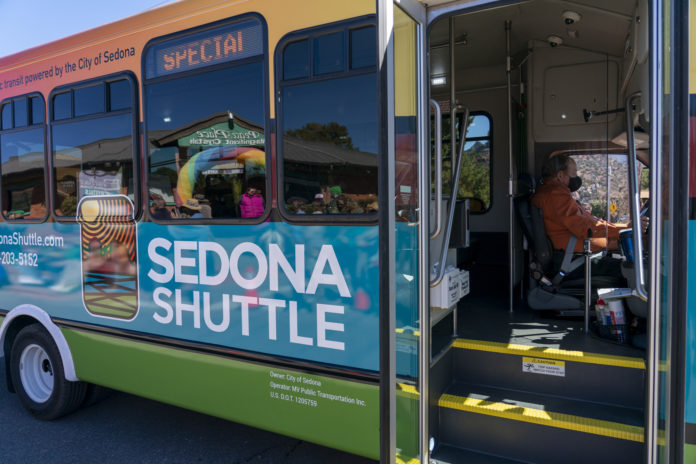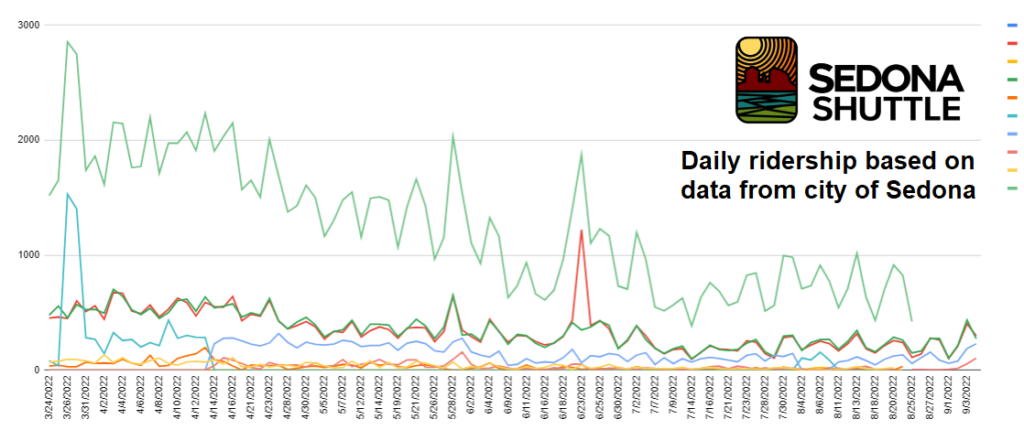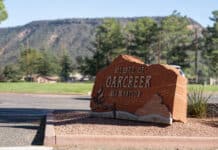
Much of the difficulty with finding a solution to heavy tourist activity in Sedona arises from a misunderstanding about how most Americans and international visitors travel.

Visitors centers are vital for the folks who still use them.
For tourists in days of yore, visiting a chamber of commerce or a municipal visitor center was the normal first step on arriving in a new town.
Previous Sedona city councils, remembering how they used to travel, built Sedona’s current tourism mitigation solutions around this outdated model. But this was in the era before the internet and the explosion of social media.
Nowadays, long-term travelers planning a summer vacation for a week or two visit TripAdvisor or Yelp, social media sites or one of a host of travel blogs to determine what they’re going to do in the place they’re going.
A Google search for Sedona vacation ideas finds the Sedona Chamber of Commerce’s “Visit Sedona” website first — which is ideal — but following that result are social media pages, travel blogs from people in Carefree, Los Angeles, Atlanta and the Netherlands, hotel booking sites and travel guides from professional travel writers.
Tourists tend to like a personal touch from someone on the ground and the reason they may ask a waiter or a cashier about the best place to eat in a town is because the locals presumably know better.
That’s also why the Uptown visitor center is so popular.
Travel blogs have been in demand since Bernhard von Breydenbach and Erhard Reuwich wrote and illustrated “Peregrinatio in Terram Sanctam” in A.D. 1486, which explained to Europeans how they could travel from Italy to the Holy Land, accompanied by relatively accurate drawings of Rhodes, Beirut, Cairo and Jerusalem.

Psychologically, a travel blog offers tips and personality from a person the reader gets to “know” and then trust. It builds trust more readily than a faceless website does, even though the latter may be far more accurate.
Likewise, social media bulletin boards — especially the half dozen or so specifically addressing Sedona visitors, one of which has more than 196,200 users — allow potential tourists to ask questions of both locals and other vacationers who have just returned from Sedona, allowing users to crowdsource their vacation plans before ever setting foot in the city.
I’m on a few of these because I enjoy making recommendations for places I like, fact-checking a bit here and there when others post inaccurate information, identifying trails or locations from photos and conversing with folks whose views of Sedona are overwhelmingly positive — which is a welcome change from some of the nastiness and cynicism one can find on the local Facebook groups from locals who can and will argue about anything.

Among the thousand of posts I’ve seen asking for tips on tours, hiking trails, hotels or restaurants, I have yet to see any posts advocating for using Sedona’s trailhead shuttle.
There are posts about using the Sedona Chamber of Commerce’s Secret 7 list to avoid the busiest trails or what times to arrive to avoid crowds, but no one asks about the shuttle.
Users don’t suggest it as an alternative to get from one place to another.
City staff and city officials don’t engage with potential visitors on many of these boards, so visitors only find out about the shuttle once they’re already here, in town, when they drive to a trailhead and discover it’s closed.
Travel blogs overwhelmingly don’t mention the shuttles, either, instead circulating advice about why readers should visit the same popular trails like Devil’s Bridge, Cathedral Rock, Bell Rock or Boynton Canyon. That simply won’t change even if the city wants social media to take care of itself with no input.
It’s no surprise, then, that shuttle ridership numbers have fallen since the March launch to a handful of riders every hour and that the buses are often running empty. The Sedona Shuttle appears to be taking the same route at the Sedona RoadRunner — a trolley system best known for transporting air from the Uptown municipal parking lot to Gallery Row.

Public transportation that serves residents first and residents primarily works best and survives. The Verde Shuttle is a godsend for many in our workforce, who use it to get to and from work in Sedona and Cottonwood, precisely because it moves locals from one spot to another on a predictable schedule. It doesn’t require foreknowledge or a downloadable app.
The Sedona Shuttle could work if it was aimed first at circulating residents among locations that residents need to visit, with tourist stops added after it develops local popularity and support. Expecting outsiders, first-time visitors and neophytes to know about a transit system that locals don’t use and barely understand either is a recipe for failure.
Christopher Fox Graham
Managing Editor


















